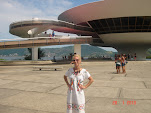Sir John Tenniel (28 February 1820 – 25 February 1914) was an English illustrator.
He drew many topical cartoons and caricatures for Punch in the late 19th century, including the iconic dropping the pilot, but he is best remembered today for his illustrations in Lewis Carroll's Alice's Adventures in Wonderland and Through the Looking-Glass.
Etiquetas: Edgar Allan Poe, John Tenniel, The Raven
"The Raven" is a narrative poem by American writer Edgar Allan Poe, first published in January 1845. It is often noted for its musicality, stylized language, and supernatural atmosphere. It tells of a talking raven's mysterious visit to a distraught lover, tracing the man's slow descent into madness. The lover, often identified as being a student, is lamenting the loss of his love, Lenore. Sitting on a bust of Pallas, the raven seems to further instigate his distress with its constant repetition of the word "Nevermore". The poem makes use of a number of folk and classical references.
Poe claimed to have written the poem very logically and methodically, intending to create a poem that would appeal to both critical and popular tastes, as he explained in his 1846 follow-up essay "The Philosophy of Composition". The poem was inspired in part by a talking raven in the novel Barnaby Rudge: A Tale of the Riots of 'Eighty by Charles Dickens. Poe borrows the complex rhythm and meter of Elizabeth Barrett's poem "Lady Geraldine's Courtship", and makes use of internal rhyme as well as alliteration throughout.
"The Raven" was first attributed to Poe in print in the New York Evening Mirror on January 29, 1845. Its publication made Poe widely popular in his lifetime, though it did not bring him much financial success. Soon reprinted, parodied, and illustrated, critical opinion is divided as to the poem's status, though it remains one of the most famous poems ever written.
Once upon a midnight dreary, while I pondered, weak and weary,
Over many a quaint and curious volume of forgotten lore,
While I nodded, nearly napping, suddenly there came a tapping,
As of some one gently rapping, rapping at my chamber door.
"'Tis some visitor," I muttered, "tapping at my chamber door —
Only this, and nothing more."
Full text here
Etiquetas: Edgar Allan Poe, The Raven
Commissioned by the Tate Gallery for their 1977 Blake Exhibition, set to Carmina Burana it follows “The Poets” journey from Heaven to Hell and back showing that “Energy is Eternal delight and whether we create of destroy-it’s the same energy.”
Etiquetas: Carmina Burana, The Tate Gallery, William Blake
A virtual movie of the great William Blake reading his much loved poem “The Tyger”
0 comentarios Publicado por María Belén en 11:46 amIn this virtual movie made by Jim Clark (2009) the poem is superbly read by Marius Goring.
Etiquetas: Jim Clark, Marius Goring, The Tiger, The Tyger, William Blake
Subscribe to:
Comments (Atom)






